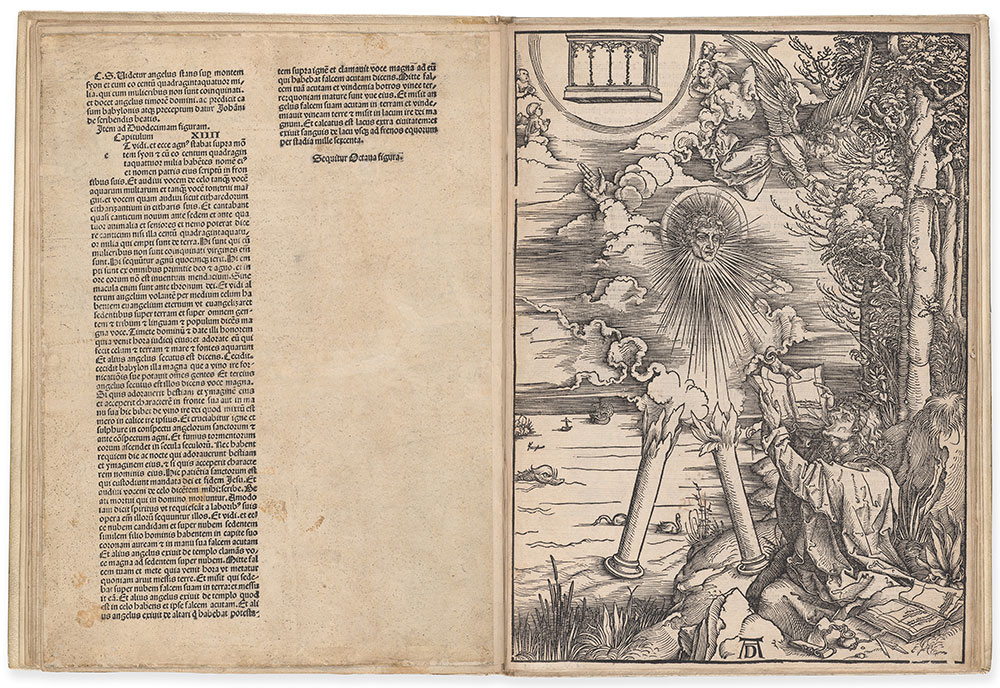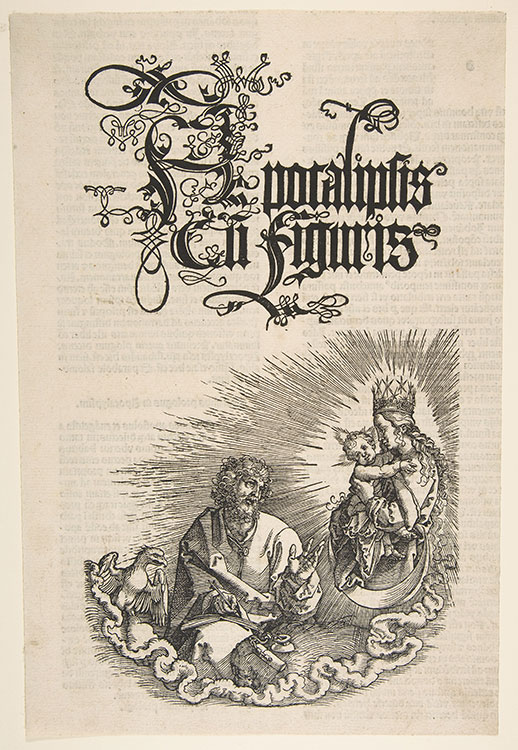NUREMBERG: DÜRER AND HUMANISM
The Apocalypse with Pictures represents Dürer’s first major book project. First published in 1498, just prior to the Jubilee Year of 1500, it represents a self-conscious declaration of artistic genius that helped him secure international fame. Dürer’s woodcutting technique incorporates refinements associated with engraving, such as tapering lines and complex crosshatching, enabling dramatic lighting and psychological nuance. The image of John the Evangelist eating a book from an angel, at right, demonstrates the visionary effect of the artist’s innovations. The biblical text describes the angel as having one foot in the sea and the other on land, “clothed with a cloud,” and with a “face as the sun, and his feet as pillars of fire.” While faithful to the source, Dürer reimagined the scene with startling vitality.
Dürer created a new title page, above, for this second edition of his Apocalypse in 1511. Underscoring the visionary nature of the text, the scene takes place in a celestial realm. John the Evangelist takes inspiration from the Virgin and Child as he writes in his book. In addition to title pages, Dürer created colophons for his books—formal statements prohibiting anyone from copying them or their prints, and declaring his work protected under imperial privilege.
Albrecht Dürer (1471–1528)
Apocalipsis cum figuris (Apocalypse with Pictures), in Latin
Nuremberg: Albrecht Dürer, 1511
Columbia University, Rare Book & Manuscript
Library, New York, BOOKART NC251.D93 1511 B47
Title Page with the Virgin and St. John
Germany, Nuremberg, 1511
Metropolitan Museum of Art, New York
Gift of Mrs. Felix M. Warburg, 1940139.6(1)


